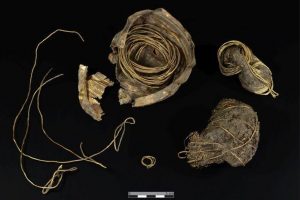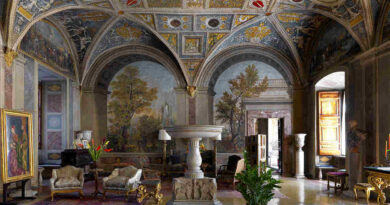Un-BOWL-lievable! With a 3,000-year-old golden bowl with a sun pattern, an archaeologist makes the “find of his life.”
A Polish archaeologist has made “the discovery of his life” after discovering a one-of-a-kind 3,000-year-old gold bowl with a sun pattern.
The gold bowl was discovered in shallow ground in an ancient village used as a site of worship in Ebreichsdorf, Austria, and is constructed of thin sheet metal containing roughly 90% gold, 5% silver, and 5% copper.
Inside, researchers discovered two gold bracelets composed of coiled wire and two clumps of organic material that were mysterious at the time of discovery, measuring 5 cm high and 20 cm in diameter.
One of the most significant archaeological findings in Austria in recent decades, dig director Dr Micha Sip from Pozna stated, “This is the discovery of a lifetime for me.”
“I’ve worked on numerous continents, including Egypt and Guatemala, but I’ve never seen anything like that.”
“This is the first discovery of its sort in Austria.”
“Not only are the numerous bronze and gold items unusual in this area of Europe,” Sip said, “but so is the size of the community we uncovered at Ebreichsdorf.”
He went on to say that just a few vessels of this sort have been unearthed in Spain, France, or Switzerland.

Andreas Rausch
Between 1300-1000 BCE, the village in today’s Ebreichsdorf was occupied by a society known as the Urnfield civilization, according to researchers (the name comes from the custom of cremating the dead and placing their ashes in urns which were then buried in fields).
Header Image: Discovered in the shallow ground at a prehistoric settlement used as a place of worship in Ebreichsdorf, Austria, the unique gold bowl is made of thin sheet metal consisting of approximately 90 percent gold, 5 percent silver, and 5 percent copper. Andreas Rausch




